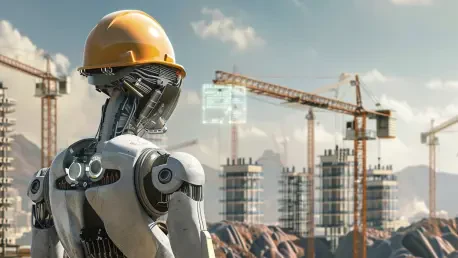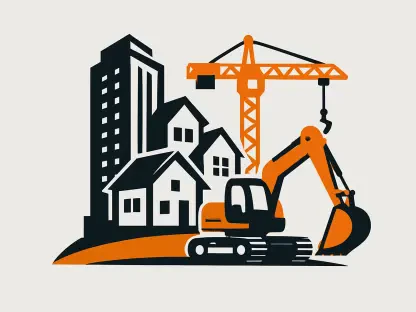Listen to the Article
In construction, every hour lost and every mistake made echoes across budgets, timelines, and reputations. Rework accounts for 12% and can sometimes go up to 30% of project costs, delays ripple through supply chains, and the margin for error grows thinner as projects scale in complexity. At the same time, the pressure to build faster, without sacrificing safety or quality, is relentless. This is where generative AI steps in as an ally in solving some of construction’s most persistent challenges.
Yet, adoption isn’t simply about plugging in a tool; it’s about understanding how to build trust in AI-driven decisions and aligning new technology with existing workflows. This article explores why generative AI is poised to reduce errors and accelerate builds, and how construction leaders can adopt it responsibly, without trading reliability for speed.
The Problem with Errors in Construction
Every build begins with a plan, but even the best-laid plans can go awry. Inaccurate blueprints, overlooked compliance requirements, or small misalignments between teams often lead to costly rework. In fact, a study highlighted that construction errors remain one of the top drivers of wasted spending, second only to supply chain disruptions.
Errors compound quickly: a miscalculated beam size can cascade into material waste, inspection failures, and halted progress. For firms operating on tight schedules, even minor mistakes erode trust with stakeholders and create tension between project managers, architects, and contractors. Traditional tools, manual reviews, checklists, and human oversight help, but they cannot scale to the complexity of modern projects.
Generative AI offers a new approach. By simulating thousands of design possibilities and flagging inconsistencies, AI tools can identify risks before they appear in the field. The ability to “see around corners” makes AI a safeguard. And when mistakes reduce, timelines accelerate, leading this conversation to the next frontier: speed.
Why Speed Still Eludes Construction
Despite advances in prefabrication, project management software, and lean methodologies, construction timelines continue to slip. Weather disruptions, resource shortages, and the sheer intricacy of coordinating diverse teams often stall momentum. The consequence: deadlines stretch, penalties mount, and client confidence falters.
Generative AI disrupts this cycle by compressing traditionally time-consuming tasks. For instance, AI-driven design tools can generate multiple build scenarios in hours rather than weeks, accounting for site constraints, materials, and regulations. Instead of waiting on lengthy iterations between engineers and architects, teams can converge on an optimized design far faster.
But speed is not just about design. AI can also accelerate project scheduling, sequencing tasks based on real-time data, and predicting bottlenecks before they cause downtime. For example, by simulating labor availability against weather forecasts, AI ensures crews are deployed where they’ll be most effective. Speed becomes sustainable when powered by foresight. Still, speed without trust is a recipe for hesitation, so how do construction firms build confidence in generative AI?
Building Trust in AI-Driven Decisions
Construction thrives on accountability. Every signed-off plan, every inspection, and every milestone depends on human judgment and oversight. So when AI proposes design alterations or sequencing shifts, natural skepticism arises: What if it misses something? Who’s accountable?
Trust begins with visibility. Generative AI platforms must show their work: why they flagged a potential error, what assumptions drive their design alternatives, and how they validated a scheduling adjustment. Transparency transforms AI from a “black box” into a collaborative partner.
Equally important is the human-in-the-loop model. Firms shouldn’t leap from zero automation to fully autonomous AI-led builds. Instead, they can start by using AI to augment human expertise (flagging issues, proposing alternatives, and generating insights), while leaving final decisions to project managers and engineers. Over time, as AI earns its place by consistently reducing errors and accelerating deliverables, trust deepens naturally. Once trust is established, the real value emerges: scaling AI across the entire build lifecycle.
Scaling Generative AI Across the Build Lifecycle
Generative AI’s power is not limited to the design desk. Its potential spans every phase of construction, from procurement to handover.
Design: Before construction begins, generate compliant blueprints, optimize layouts, and reduce clashes between systems (plumbing, electrical).
Procurement: Forecast material demand with greater accuracy, minimizing waste and shortages.
Scheduling: Dynamically adjust timelines based on real-world conditions like weather, site readiness, and labor shifts.
On-site Execution: Provide real-time guidance through augmented reality overlays, helping crews follow optimized plans with fewer mistakes.
Handover & Maintenance: Create AI-generated digital twins of the final build, ensuring smooth facility management and long-term asset performance.
Scaling AI requires governance. Firms must define clear rules for when AI can automate decisions outright, when it assists humans, and when human authority remains non-negotiable. Without structure, scaling AI could introduce as many risks as it resolves. With scale comes maturity, and maturity requires rethinking this technology not as a tool, but as an operational partner.
The Road to AI Maturity in Construction
The journey toward generative AI maturity in construction mirrors the path taken by other industries: it starts with pilots, grows through trust, and culminates in integrated systems that drive measurable business outcomes.
Stage 1: Exploration. AI is used in limited pilots, catching design errors or optimizing schedules, while teams learn its strengths and weaknesses.
Stage 2: Operationalization. AI becomes embedded in daily workflows, with project managers relying on AI-generated insights to guide decisions.
Stage 3: Integration. AI acts as a true partner, automating routine tasks, accelerating project delivery, and providing predictive insights across the lifecycle.
This maturity curve isn’t about removing humans; it’s about freeing them for higher-value work. When AI handles repetitive reviews and scheduling, humans can focus on creativity, negotiation, and strategy. The result is a construction ecosystem where speed and accuracy reinforce each other, driving better outcomes for all stakeholders.
In the end, the future of construction is about man and machine, building together.
Building with Confidence
Generative AI is a practical tool ready to reshape construction. By reducing errors, accelerating timelines, and scaling across the build lifecycle, AI offers firms a path to higher productivity and stronger margins.
But adoption must be thoughtful: visibility, trust, and governance are the foundations of AI maturity.
Construction leaders who embrace generative AI today are not just building projects faster; they’re building confidence in a new way of working. And in an industry where every day and every detail matters, that confidence may be the most valuable asset of all.









